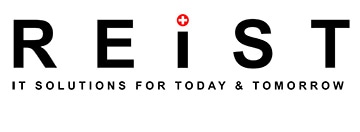Keeping pace with customer needs
For Reist Telecom, the key to continued success is keeping up with a rapidly evolving digital world. "When we make technology changes, they are always driven by customer needs and the forces moving the market," says Roli Estermann, co-owner and CEO at Reist. "We try to stay one step ahead. When a customer has a need, we anticipate that need and—with the help of our technology partners—find innovative ways to satisfy it."
For example, several years ago Reist noted that security best practices were shifting from reliance on traditional firewalls to identity-based authentication. As a long-time Cisco Premier Integrator and Select Provider, Reist chose Cisco Identity Services Engine (ISE) for its Identity and Access Management product, called MAYI ID.
While this offering hit the mark with customers, there's always another challenge right around the corner. Reist serves customers in diverse industries including airlines, manufacturing, and financial services. When it looked closely at its customer requirements, it saw that while some customers continued to use virtual machines, others were transitioning to containers—and many needed both. "There are customer applications which are not yet ready to move to containerization because they would need to be completely reworked", explains Estermann. "At the same time, we have customers that absolutely need containerization and don't want to go to public cloud, creating a clear opportunity for us."
The conventional solution to this challenge would have been for Reist to create a new Kubernetes service to support containers. But a separate service would mean adding cost and complexity—both for Reist and for its customers.
A single platform for VMs and containers
Choosing to think outside the box, Reist turned to Cisco and Red Hat for the technology to create a single service that addresses VM and container needs with the same shared infrastructure. Reist’s existing virtualization environment was built on VMware. "We wanted a solution that would give us more control over our roadmap and cost structure. The Broadcom acquisition of VMware simply accelerated that thinking," says Patric Siegrist, Chief Architect at Reist Telecom. "Once the acquisition happened, it was unclear what future VMware pricing would look like. That drove our decision to move to Red Hat OpenShift, which would allow us to provide a single, shared platform for both VMs and containers."
With Red Hat OpenShift, Reist enhanced its computing capabilities and is now able to offer one of the most advanced container platforms on the market. Using Red Hat OpenShift Virtualization, which is included as part of the license, the company is also able to migrate and support its customers’ virtualized applications. "This solution allows us to get back to offering a single, shared platform that aligns with our customers’ needs," says Siegrist. "And because our environment was already deployed on Cisco UCS servers, we could begin the transition without changes to our hardware platform."
Transitioning from VMware to OpenShift with Cisco UCS
Reist Telecom has been a Cisco networking customer since opening for business in 2001, and it became a UCS customer soon after the UCS launch in 2009. "Our experience with Cisco networking equipment had been positive, so we decided to take a chance on what was at the time an unproven server platform," explains Philipp Hofstetter, CTO and Co-owner at Reist. "Our experience with UCS since then has been extremely positive."
One UCS feature that Reist really appreciates is Cisco service profiles, which define the hardware and software resources for a server—including its identity, network and storage connectivity, and firmware settings—abstracting the underlying hardware from the operating system and applications. Using service profiles, servers can be re-purposed without manual reconfiguration. "Cisco UCS gives us much more flexibility," says Estermann. "Over the last 18 months we’ve been going through a big data center move, and we relied on Cisco service profiles when transitioning systems from one data center to the other."
The data center migration also created the opportunity for Reist to refresh its existing UCS environment with the latest-generation UCS X-Series servers and the Intersight IT operations platform. The upgrade offers significant benefits in modularity, scalability, and AI support. For Reist, this refresh has been a big win. "Intersight is very important for us," says Guido Beltrame, Head of Windows and Infrastructure at Reist. "It makes it very easy to see what’s happening with all our servers. Intersight gives us visibility across all three data centers in one place."
The UCS platform has also greatly simplified the migration from VMware to Red Hat OpenShift. "From an infrastructure standpoint, we just pass servers to the OpenShift team, and they are able to start deploying the software," says Beltrame. "There is nothing we have to change on the UCS side."
Red Hat provided the necessary migration tools to simplify the process of moving VMs. "The OpenShift migration toolkit for virtualization (MTV) enables you to smoothly interconnect with VMware ESX and migrate your VMs," explains Siegrist. "There are different scenarios you can use to minimize downtime."
Because Cisco and Red Hat have been partnering to offer joint solutions for years, Reist was able to get the migration support it needed with no finger-pointing. "Cisco and Red Hat worked together well, resolving any issues that arose quickly," adds Siegrist. "Having the ability to offer VMs and containers on a single platform that combines the strengths of UCS X-Series and Red Hat OpenShift is making it easier for us to support customers transitioning from VMs to containers."
Enabling a platform for future growth
The migration from VMware to OpenShift is now largely complete. "We are now implementing the necessary development environments for customers that are building containerized applications," says Estermann. There are only two special cases where Reist still runs VMware: a dedicated environment that runs on VMware at the customer’s request, and a VDI environment. Reist will eventually look at transitioning those to OpenShift or to the cloud.
With the server migration and data center transition behind it, Reist, a long-time user of Cisco Nexus switching, is now looking to take full advantage of Software-Defined Networking (SDN) based on Nexus and Cisco ACI. "ACI is one of the best technologies available for the data center backbone, it’s very flexible and very reliable," says Estermann. "We’re ready to start enabling some of the advanced security features of ACI—such as micro-segmentation—to make our data centers even more secure."
The company is also implementing AI capabilities to strengthen security. "We are using AI functionality in our identity and access management service to provide greater visibility for ourselves and our customers," explains Estermann.
The company believes it is well-positioned to satisfy customer AI needs. "We anticipate that we will start seeing customer demand for AI hardware," says Hofstetter. "With UCS X-Series in place, we are well prepared. We can simply add the necessary GPU modules into our existing chassis."
Reist recognizes Cisco as an important partner. "We depend on Cisco to support a large part of our business," says Estermann. "Cisco hardware is reliable, stable, and offers great longevity, and the Cisco Technical Assistance Center (TAC) is one of the best support organizations out there."
With Cisco and Red Hat as its technology partners, Reist is confident it will continue to innovate to meet rapidly changing customer needs.



